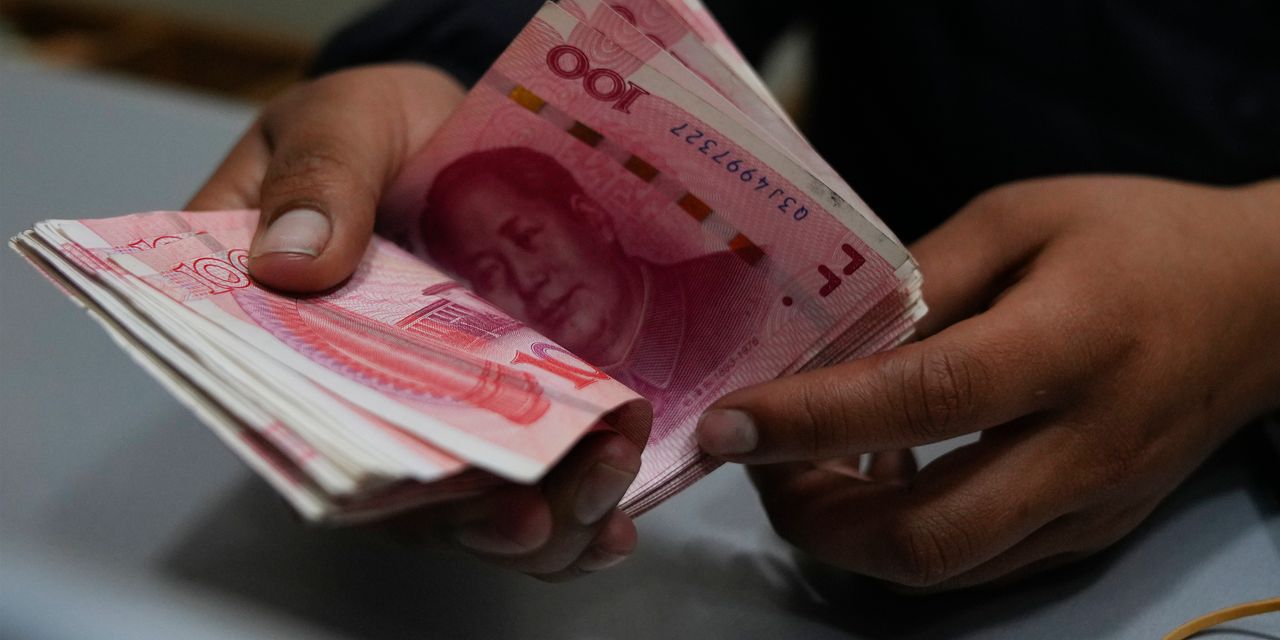
Currencies: China’s yuan heads for multiyear lows versus dollar as sentiment darkens
Juan Karita/APChina’s currency is in trouble. Darkening sentiment continued to envelop China, the world’s second-largest economy, on Thursday after data showed the country’s exports fell in August for a fourth consecutive month and imports also declined. The report came on top of already-existing concerns that China is slipping into deflation and its property sector is reeling. The onshore yuan USDCNY, which circulates within mainland China, dropped to a roughly 16-year low against the dollar amid growing pessimism. The currency slid by about 0.2% to 7.3293 per dollar as of Thursday morning in New York, according to Tullett Prebon. China’s offshore currency USDCNH dropped by 0.3% to 7.3382 per dollar after touching the lowest level since its creation in 2010. The currency’s weakness comes even after China’s central bank, the People’s Bank of China, has continued to provide support by setting its daily reference rate at a stronger-than-expected level for a 54th straight day on Thursday. Earlier this month, the central bank also unexpectedly cut a key policy rate to bolster China’s struggling economy, a move that some described as too little too late. “We think the monetary policy or fiscal support has been tepid at best and pressure continues to be on the yuan to weaken as concern over China’s economy or potential bigger risk events — further issues in the property market, for example — gets priced in,” said Tom Nakamura, a currency strategist and co-head of fixed income at AGF Investments in Toronto, which oversaw $30.9 billion (CAD $42.3 billion) in assets as of Aug. 31. “The natural mechanism for that is through the currency.”For Nakamura, the bigger problem facing investors around the world would be the factors which might lead to even sharper downward moves in the yuan, such as eroding confidence in China that goes from being cyclical or medium term to something longer term. If that happens, the PBOC “could do more aggressive intervention — whether it’s buying gold or selling assets to fund the intervention — though that would also raise questions about whether the sheer size of China’s reserves would be sufficient or available to help,” Nakamura said via phone. While it’s hard to tell what levels of the yuan would be needed to unnerve investors globally, “I wouldn’t say that we’re there now.” Other measures of the onshore yuan, such as its performance against the euro, “suggest that the weakness is not nearly as alarming,” he said. Meanwhile, one measure of the dollar, known as the Bloomberg Dollar Spot Index, showed the U.S. currency is on track for its eighth straight weekly advance — which would mark its longest rally in years. The greenback is benefiting from a U.S. economy that continues to defy expectations, making it more likely that Federal Reserve policy makers will keep interest rates elevated.The ICE U.S. Dollar Index DXY was up almost 0.2% as of Thursday morning, while U.S. stocks SPX COMP were mostly lower and Treasury yields moved broadly lower in New York trading. Eroding long-term confidence in China would likely put downward pressure on Treasury yields, all else equal, and lead to a repricing in U.S. stocks, Nakamura said.
Market Pulse Stories are Rapid-fire, short news bursts on stocks and markets as they move. Visit MarketWatch.com for more information on this news.


